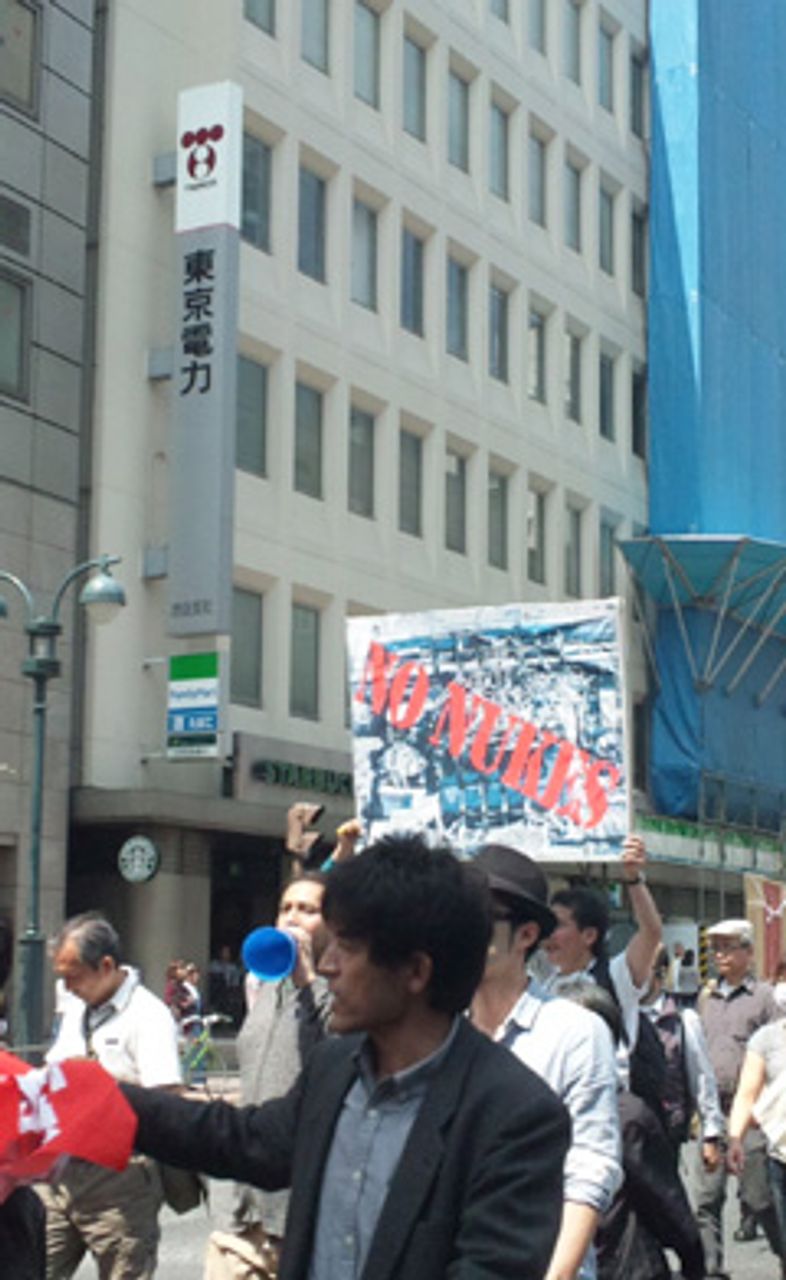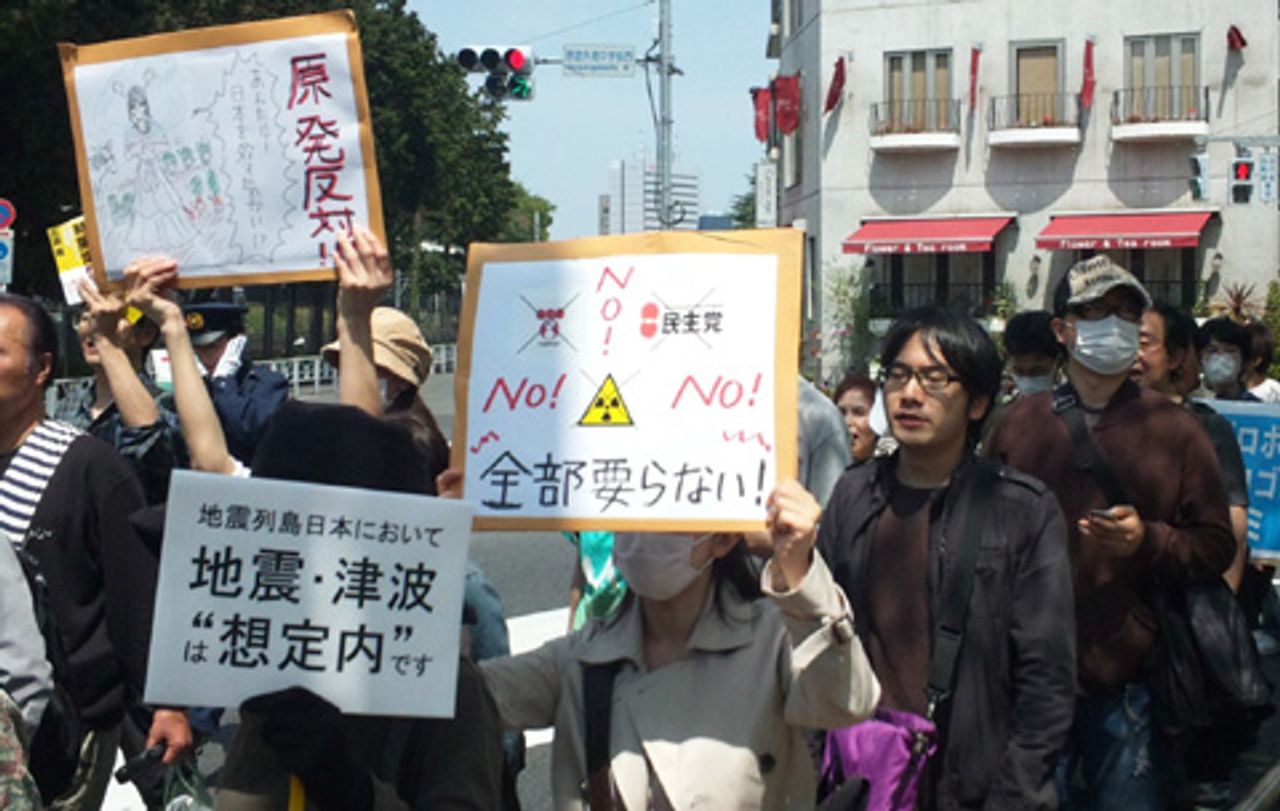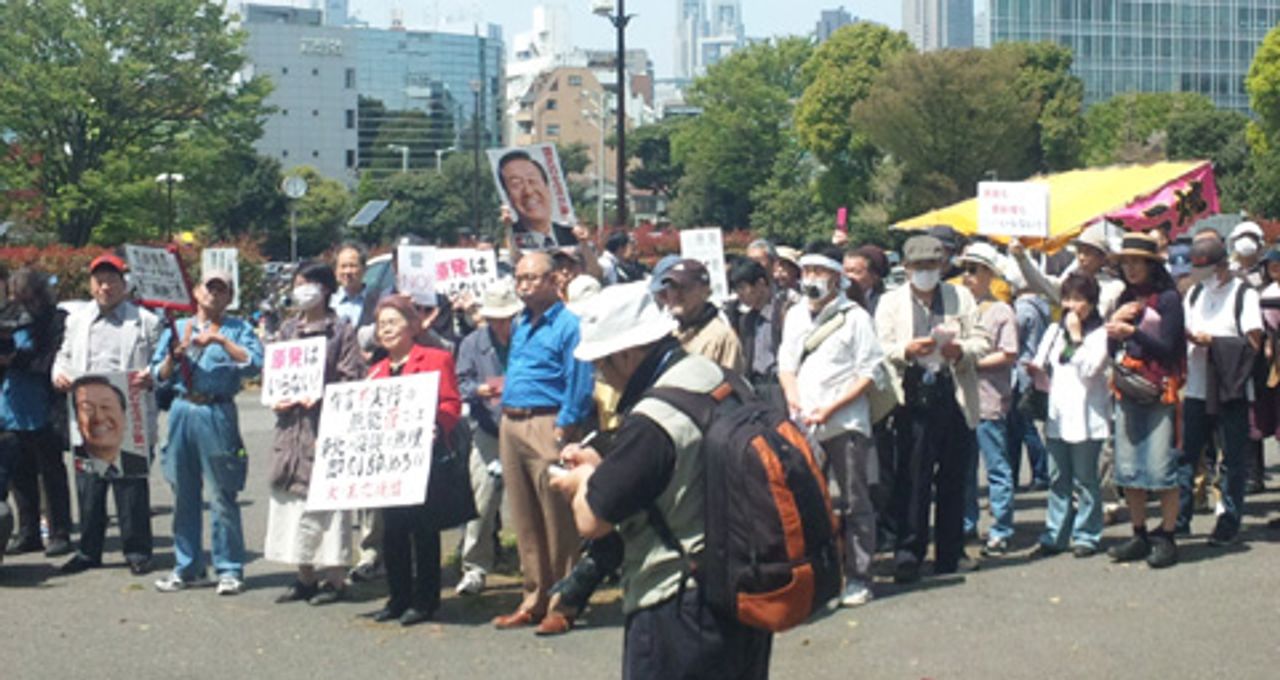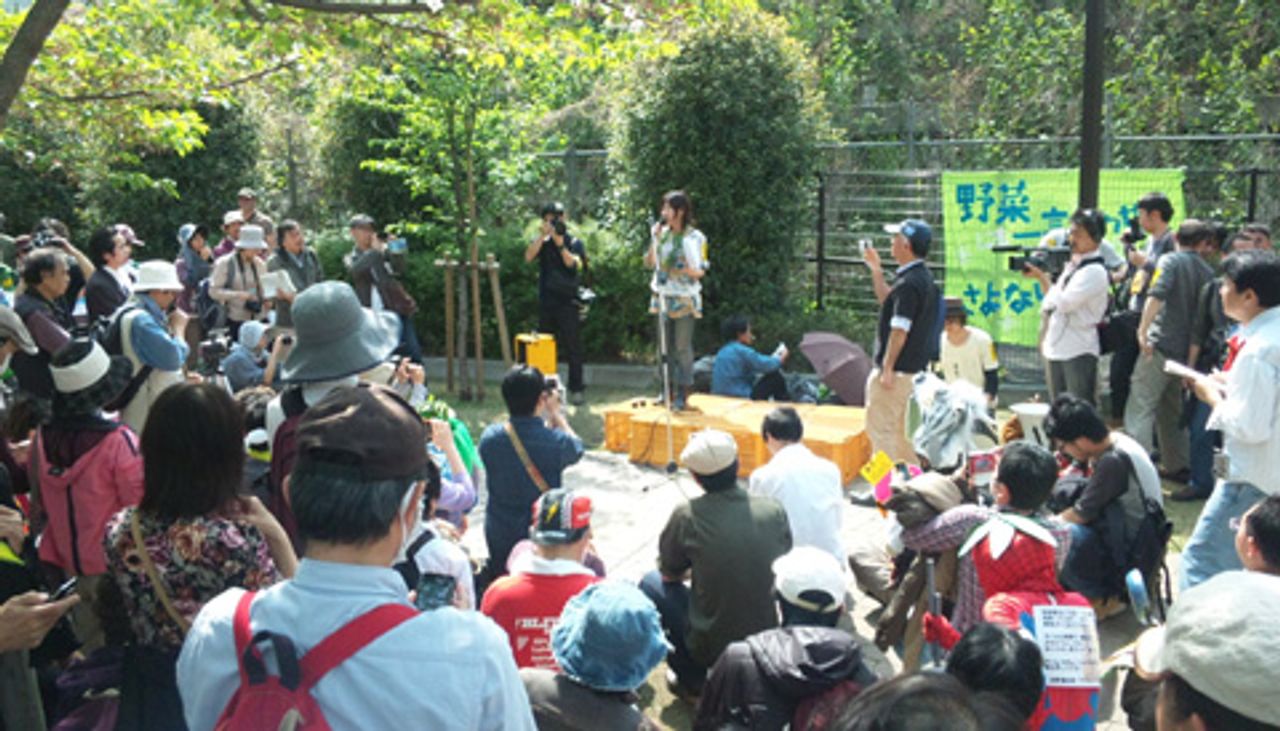The ongoing crisis at the Fukushima Dai-ichi nuclear plant following the March 11 earthquake that struck north-eastern Japan has produced rising public concern over the risks of nuclear power and indignation at the government’s response to the disaster. These sentiments have been reflected in public opinion polls, but also in small but significant protests.
 No nukes sign outside TEPCO office
No nukes sign outside TEPCO officeAnti-nuclear street protests have been held over the past four weekends, but reports are conspicuously absent in the major Japanese media. Not a word! The biggest so far, on April 10 in Koenji, part of Tokyo, drew an estimated 15,000 people including many youth. It was directed against the Hamaoka nuclear plant southwest of Tokyo, which seismologists believe is built in an area due for a massive earthquake. The protest was organised by civic groups, which stressed their independence from political parties and labor unions, quite probably a contributing factor to the large turnout.
Public protests of any size have become relatively rare in Japan in recent decades. Large demonstrations took place against the US invasion of Iraq and the Japanese government’s subsequent deployment of troops to support the occupation. In April 2010, major protests took place against the government’s cave-in to US demands to maintain a controversial US military base on Okinawa.
As well as anti-nuclear rallies, scores of public lectures on nuclear power, petition signings and various anti-nuclear citizens’ initiatives have taken place. This reporter attended two rallies last weekend—on April 16.
 Placards opposing nuclear power, TEPCO and the DPJ
Placards opposing nuclear power, TEPCO and the DPJThe first was called by the “April 16 citizens’ executive committee,” headed by Nobuaki Futami, a former transport minister. The main slogans of the rally were supposed to be “For a society free of nuclear power!” and “Hold Premier Kan criminally responsible for his failures at crisis management!”
Over the past weeks, political pressure on Prime Minister Naoto Kan to step down has been gaining momentum, including inside his own party—Democratic Party of Japan (DPJ), as well as from the opposition Liberal Democratic Party (LDP).
The committee’s web page further explained that going “nuke free” would mean a lot of sacrifices on the part of the population, but was the right decision. It criticised the power and nuclear industry companies, the mainstream media, self-serving politicians, bureaucrats, and academics who are under the government’s thumb.
The start of the rally, however, featured placards supporting Ichiro Ozawa and large pictures praising him. Ozawa is a factional powerbroker and political rival to Kan inside the DPJ, who last week sharply criticised the prime minister for his poor management of the crisis. A former LDP member, Ozawa is the personification of Japan’s cynical political operators. His nickname is “the destroyer” for the way he created and wrecked three parties.
 Protestors with anti-Kan and pro-Ozawa placards
Protestors with anti-Kan and pro-Ozawa placardsFutami, who led the protest, was with Ozawa in smaller parties of the 1990s, such as the New Frontier Party, and joined the DPJ in 2004 to become part of Ozawa’s faction. The protest therefore was an attempt to exploit the broadly felt but vague anti-nuclear sentiment to criticise Kan and prepare for another possible leadership challenge by Ozawa.
About 500 people attended the demonstration, many of whom were older, probably retirees. With no speeches beforehand, other than instructions on how to behave on the road, the hour-long march proceeded from the vicinity of the Tokyo Gymnasium, past TEPCO’s Shibuya office, where the protesters were loudest, to finish in a small park next to Shibuya station in downtown Tokyo.
The main chants were: “Kan, step down!”; “Oppose nuclear power!”; “This is a human-made disaster by Naoto Kan!”; “TEPCO and Kan administration, stop concealing information!”; and “We want Ichiro Ozawa!”. There were many original, handmade placards, mostly along the same lines, but some hostile to the DPJ. Quite a few of those present had not known that this would be a pro-Ozawa rally. The organizers said nothing beforehand, no doubt fearing Ozawa’s unpopularity would dampen the turnout.
The organisers provided no opportunity for speeches or discussion. At the end of the march at Miyashita park, the protesters were simply told to disperse. There was a strong sense of anti-climax. One old lady told an organizer that she had come from Kobe (some 600 kilometers away), and this was her time to publicly protest. She felt strongly about nuclear power and just had to do something.
 PARC representative speaking
PARC representative speakingAnother smaller protest organised by an unrelated organisation—Pacific Asia Resource Centre (PARC)—took place in the same park an hour and a half later. It was just as politically misguided as the previous protest. The main banner was: “Let the vegetables speak: Sayonara (goodbye) nuclear power!” PARC is a non-government organisation (NGO) focusing on ecological and environmental issues.
Significantly none of the speakers from PARC, Greenpeace Japan and other NGOs had anything critical to say about the DPJ or the government. The Greenpeace spokeswoman simply reported that her organisation’s independent radiation measurements agreed with the official ones, so there was no need to distrust the government on this. The chants included: “No nuclear power”; “We want to eat vegetables”; “We want to eat fish” and “Stop Hamaoka”.
What these two protests revealed is an underlying popular discontent and anger that is strongly felt, but politically naive. At present these sentiments are being channelled in directions that pose no threat to capitalism which is at the root of the nuclear crisis. No amount of pressure on the Kan government, or indeed on an Ozawa government, is going to end the decades-long collusion between energy giants, such as TEPCO, government and the state bureaucracy that compromised safety at the Fukushima plant and led to the present disaster.
